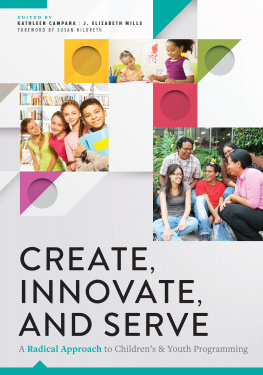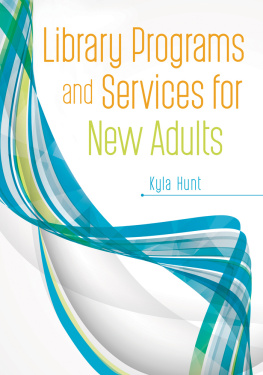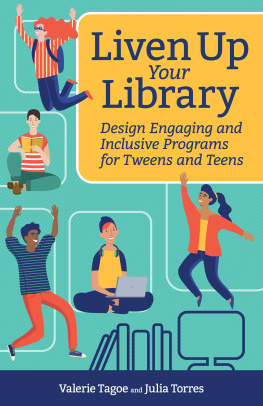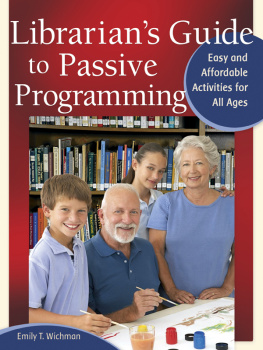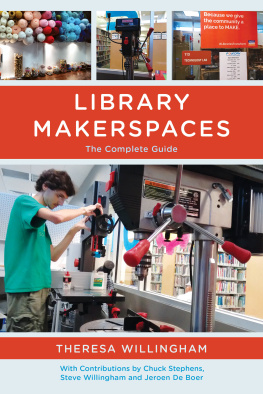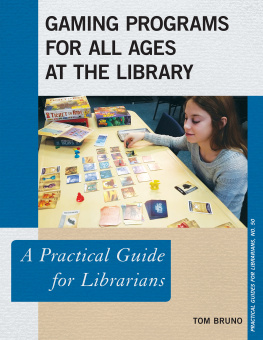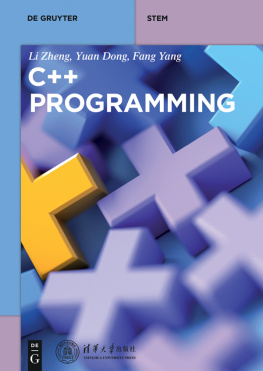The Passive
Programming
Playbook
The Passive
Programming
Playbook
101 Ways to Get Library
Customers off the Sidelines
Paula Willey and Andria L. Amaral

Copyright 2021 by Paula Willey and Andria L. Amaral
All rights reserved. No part of this publication may be reproduced, stored in a retrieval system, or transmitted, in any form or by any means, electronic, mechanical, photocopying, recording, or otherwise, except for the inclusion of brief quotations in a review, without prior permission in writing from the publisher.
Library of Congress Cataloging-in-Publication Data
Names: Willey, Paula, author. | Amaral, Andria L., author.
Title: The passive programming playbook : 101 ways to get library customers off the sidelines / Paula Willey and Andria L. Amaral.
Description: Santa Barbara, California : Libraries Unlimited, an imprint of ABC-CLIO, LLC, [2021] | Includes bibliographical references and index.
Identifiers: LCCN 2021007454 (print) | LCCN 2021007455 (ebook) | ISBN 9781440870569 (paperback) | ISBN 9781440870576 (ebook)
Subjects: LCSH: LibrariesActivity programsUnited States. | BISAC: LANGUAGE ARTS & DISCIPLINES / Library & Information Science / General
Classification: LCC Z716.33 .W545 2021 (print) | LCC Z716.33 (ebook) | DDC 025.5dc23
LC record available at https://lccn.loc.gov/2021007454
LC ebook record available at https://lccn.loc.gov/2021007455
ISBN: 978-1-4408-7056-9 (print)
978-1-4408-7057-6 (ebook)
252423222112345
This book is also available as an eBook.
Libraries Unlimited
An Imprint of ABC-CLIO, LLC
ABC-CLIO, LLC
147 Castilian Drive
Santa Barbara, California 93117
www.abc-clio.com
This book is printed on acid-free paper 
Manufactured in the United States of America
Contents
Andria remembers her favorite library school professor, Dr. Pat Feehan, saying that when librarians steal, we do it with both hands. (Note: Dr. Pat has no recollection of saying this, but Andrias been reciting the quote for decades, and as Dr. Pat taught Andria everything she knows about programming, were running with it.) For the past several years, we have been the weird adults prowling through your library, snapping pictures of your trivia posters, library pets, and writing prompts. Sorry if we startled you. But your ideas are too good not to share.
Weve made every effort to track down and credit individuals and libraries for the ideas weve adapted, adopted, or just reproduced outright. But a lot of ideas develop similarly in different placescall it convergent evolution for library programmingso we apologize if you see something that looks familiar and dont see yourself credited.
Other ideas came from Facebook groups, from conversations at professional conferences, and from colleagues who knew we were collecting cool passive programs. We owe you all a tremendous debt.
We both want to thank our coworkers who have good-naturedly endured all the wacky ideas we test-drove on the road to writing this book, and who diligently counted all the slips in the jars, the comments on the whiteboards, and the sticker dots on the polls to help quantify our passive programs success. And most of all, we are grateful to our customers, who inspire us to create opportunities for them to learn, explore, and grow in our libraries.
Libraries always seem to be short on resources. If were not understaffed, were short on space. If we have plenty of space, weve got no budget. Maybe were low on all three. Even if you work in library paradisea spacious, fully staffed facility with a luxurious budget (it has to exist, right?)you are still probably not interacting with every person who walks in the door.
This is where passive programming comes in.
In this book, youll find ways to make mountainous program stats out of molehill budgets. Youll learn how to squeeze program prep into stray seconds (OK, minutes) of staff time. And youll get great advice on how to wedge an additional program or activity into the most miniscule unused spacea shelf, ten inches of desk space, even the air above your head.
Passive programming isnt meant to replace library-led programs. Instead, its a great way to further enrich your imaginative, rich, active program schedule and even leverage it into additional interactions with customers.
We cant even count the number of ideas weve included here (we stopped counting once we got to 101), and weve only scratched the surface of what resourceful library staff around the world dream up for their customers. You might have something going on right now that weve never even thought of. Share it! Post it to Pinterest, Instagram, Twitter, or a library Facebook group and use the hashtag #passiveprogramming so that we all can steal it.
Giving customers opportunities to engage and express themselves results in priceless interactions that will brighten your day, stave off burnout, and motivate you to do even more passive programming. At the end of each chapter, youll find instant replays of some of the true hilarious and touching moments weve experienced. We hope they inspire you.
A note on booklists and examples: youll find booklists and sample quiz questions for many of the programs in this book. However, in other places, weve elected not to include them. Our rule of thumb is if it took us more than half an hour to gather a list, we put it in the book. If its something that most library folks will be able to put together with a minimum of shelf scanning or internet searching, we left it out.
Have fun!
Paula and Andria
Passive programming, simply put, is a way to engage your library customers at their own pace and interest level through self-directed activities. Amy Koester and Marge Loch-Wouters call it unprogramming (showmelibrarian.blogspot.com/2013/07). Megan Emery Schadlich refers to it as antiprogramming in her book Cooking Up Library Programs Teens and Tweens Will Love. In her books on teen programs that work, RoseMary Honnold calls them independent programs, and Susannah Richards of Eastern Connecticut State University prefers the term environmental engagement.
Call it what you will, these available anytime independent activities all amount to the same thing: adding value to your customers library visits and creating opportunities for them to engage and interact with staff, other library users, and your materials and services.
We cant be everywhere at once. Therefore, we need to optimize our environment so that every customer comes away entertained or informed. Or, ideally, both. This can be as minimal as a bulletin board with a match game or can be as elaborate as Prereader Circuit Training.
Its also great for people who just really want to slink in and slink out and really dont want to talk to people (*raises hand). Librarians are great at the peppy thing in our professional life, but a whole lot of us are just not the join-in type. So we have great empathy for the recalcitrant, slightly shy patron.
A word about stealing: we all have jobs. Nobody has time to invent new stuff every day. So were giving you a whole book full of fantastic ideas with permission to steal, adapt, and make them your own. Youre welcome.
Passive programming is a starting point
Passive programming is not a goal in and of itself. Done right, its an ongoing first step to build your audience and establish relationships with your customers. Passive programming doesnt mean you get to just sit back, put your feet up on the desk, and let it happen. Youre keeping an eye on it, adjusting it to create more appeal or add more value, and evaluating its effectiveness every day. In addition, passive programming creates opportunities for further engagement, and its up to you to take advantage of those moments and bring the transaction to the next level.




